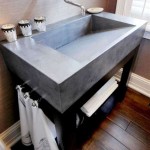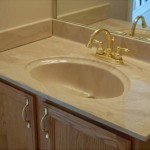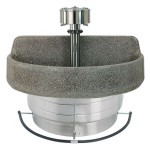Cleaning Black Mould From Bathroom Walls: A Comprehensive Guide
The presence of black mould in a bathroom is a common yet concerning issue for homeowners. This unsightly and potentially hazardous growth thrives in the warm, humid environments often found in bathrooms. Addressing black mould promptly and effectively is crucial for maintaining a healthy living space and preventing structural damage to the property. This article provides a detailed guide to cleaning black mould from bathroom walls, covering identification, preparation, cleaning methods, and preventative measures.
Identifying Black Mould
Accurate identification of the mould species is essential for determining the appropriate course of action. While visual inspection can offer clues, definitive identification often requires professional testing. Black mould, typically referring to *Stachybotrys chartarum*, often appears as a dark, greenish-black substance. It may have a musty or earthy odour. However, it is imperative to note that not all black-coloured mould is *Stachybotrys chartarum*, and conversely, not all harmful moulds are black. Other common bathroom moulds include *Aspergillus* and *Cladosporium*, which can present in various colours such as green, brown, or white.
Regardless of the specific species, any mould growth in a bathroom indicates excessive moisture and should be addressed promptly. Distinguishing between surface mould and mould that has penetrated deeper into building materials is also crucial. Surface mould typically appears as spots or patches on the surface of walls, tiles, or grout, while deep-seated mould may indicate a more significant underlying moisture problem.
If there is any doubt about the type of mould or the extent of the infestation, it is advisable to consult a professional mould remediation specialist. These professionals have the expertise and equipment to accurately identify the mould species, assess the extent of the problem, and recommend appropriate treatment strategies.
Preparing for Mould Removal
Before initiating any mould removal process, proper preparation is paramount to protect both the individual performing the cleaning and the surrounding environment. This preparation involves several key steps designed to minimize exposure to mould spores and prevent their spread to other areas of the house.
Personal Protective Equipment (PPE): The first and most important step is donning appropriate PPE. This includes a respirator mask rated for mould spores (N95 or higher), eye protection such as goggles, and gloves to protect the skin. Long sleeves and pants are also recommended to minimize skin exposure. If the mould infestation is extensive, a disposable coverall suit is advisable.
Ventilation: Adequate ventilation is crucial to prevent the build-up of mould spores in the air. Open windows and doors to allow for airflow. If possible, use a fan to exhaust air from the bathroom to the outside. However, avoid using the bathroom's ventilation fan as it may simply recirculate spores throughout the room. Instead, position a box fan in a window to blow air outwards.
Containment: To prevent the spread of mould spores to other areas of the house, the bathroom should be contained. This can be achieved by sealing off the doorway with plastic sheeting and duct tape. Ensure the plastic sheeting is securely attached to the walls and floor, creating an airtight barrier. This containment strategy helps to confine the mould spores to the affected area, preventing them from contaminating other parts of the home.
Gather Cleaning Supplies: Assemble all necessary cleaning supplies before starting the mould removal process. These supplies typically include a stiff-bristled brush, spray bottles, cleaning solutions (discussed in the next section), paper towels, and garbage bags. Having all materials readily available will streamline the cleaning process and minimize interruptions.
Effective Cleaning Methods
Several cleaning solutions can be used to effectively remove black mould from bathroom walls. The choice of solution depends on the severity of the mould growth, the type of surface being cleaned, and individual preferences. It is crucial to test any cleaning solution in an inconspicuous area first to ensure it does not damage the surface.
Bleach Solution: A common and effective method involves using a bleach solution. Mix one part bleach with ten parts water. This solution is particularly effective on non-porous surfaces such as tiles and grout. Apply the solution to the affected areas using a spray bottle or sponge. Allow the solution to sit for 10-15 minutes to kill the mould spores. Scrub the affected areas with a stiff-bristled brush to remove the mould. Rinse thoroughly with clean water and dry the surface completely.
Vinegar: White vinegar is a natural and less harsh alternative to bleach. Vinegar is acidic and can kill many types of mould. Pour undiluted white vinegar into a spray bottle and spray the affected areas. Let the vinegar sit for at least one hour to allow it to penetrate the mould. Wipe away the vinegar with a damp cloth and allow the surface to air dry. The strong smell of vinegar will dissipate over time.
Baking Soda: Baking soda is another natural and non-toxic cleaning option. Mix baking soda with water to create a paste. Apply the paste to the mouldy areas and let it dry. Once dry, scrub the area with a brush and rinse with water. Baking soda is also effective at absorbing moisture, which can help prevent future mould growth. A baking soda solution can also be sprayed on the affected areas. Mix one teaspoon of baking soda with two cups of water in a spray bottle. Shake well and spray on the mouldy surface. Let it sit for a few minutes and then scrub with a brush. Rinse with water and dry.
Hydrogen Peroxide: Hydrogen peroxide is an antifungal and antibacterial solution that can effectively kill mould. Pour a 3% hydrogen peroxide solution into a spray bottle and spray the affected areas thoroughly. Let it sit for 10-15 minutes, and then scrub the area with a brush. Wipe clean with a damp cloth and dry the surface.
Commercial Mould Removers: Several commercial mould removers are available in the market. These products are specifically formulated to kill mould and inhibit its growth. Follow the manufacturer's instructions carefully when using these products. Ensure adequate ventilation and wear appropriate PPE as some commercial mould removers can be quite potent.
After cleaning, thoroughly dry the cleaned areas to prevent the mould from returning. Use a clean cloth or paper towels to wipe away any excess moisture. Ensure adequate ventilation by opening windows and using a fan to circulate air. For porous surfaces like drywall, consider using a dehumidifier to draw out any remaining moisture.
Preventative Measures
After successfully removing the black mould, implementing preventative measures is essential to inhibit future growth. These measures focus on controlling moisture levels, improving ventilation, and maintaining a clean bathroom environment.
Improve Ventilation: Adequate ventilation is crucial to prevent the build-up of moisture in the bathroom. Ensure the bathroom is well-ventilated by opening windows after showering or bathing. Consider installing or upgrading the bathroom exhaust fan to effectively remove humid air from the room. Run the exhaust fan during and immediately after showering or bathing, and leave it running for at least 30 minutes afterward to ensure all moisture is removed.
Control Moisture Levels: Controlling moisture levels is paramount in preventing mould growth. Repair any leaks in the plumbing, faucets, or showerheads promptly. Address any water damage to walls or ceilings immediately. Use a dehumidifier in the bathroom, especially in humid climates, to maintain a low humidity level (ideally below 50%). Wipe down wet surfaces, such as shower walls and doors, after each use to remove excess moisture.
Regular Cleaning: Regular cleaning of the bathroom is essential to prevent mould growth. Clean the bathroom surfaces, including walls, tiles, and grout, regularly with a mould-inhibiting cleaner. Pay particular attention to areas prone to mould growth, such as the shower, bathtub, and around the toilet. Regularly inspect the bathroom for any signs of mould growth and address them promptly.
Proper Grout Sealing: Grout is a porous material that can easily absorb moisture, creating a breeding ground for mould. Seal the grout lines regularly with a grout sealer to prevent water from penetrating. Reapply the grout sealer every six months to a year, or as needed. Consider using epoxy grout, which is less porous and more resistant to mould growth, when installing new tiles.
Use Mould-Resistant Paint: When repainting the bathroom, use mould-resistant paint. These paints contain additives that inhibit mould growth and can help prevent future infestations. Follow the manufacturer's instructions carefully when applying mould-resistant paint.
Minimize Clutter: Clutter can trap moisture and create a favourable environment for mould growth. Minimize clutter in the bathroom by storing items in sealed containers or removing them altogether. Ensure that items such as bath mats and shower curtains are regularly cleaned and dried to prevent mould growth.
By implementing these preventative measures, the likelihood of black mould returning to the bathroom can be significantly reduced, creating a healthier and more comfortable living environment.

Black Mold In The Shower How To Clean It Kitchen With Matt

How Do I Remove Black Mould From Shower Floor

How To Clean Black Spots In The Bathroom Family Handyman

How To Get Rid Of Mold In The Shower On Bathroom Walls Clorox

How To Remove Mold From Walls True Value

How To Remove Mould From Your Bathroom Ceiling Cleanipedia Za

Black Mold In The Shower How To Clean It Kitchen With Matt

What Do About Black Mold In The Bathroom Bob Vila

The Ultimate Guide On How To Clean And Get Rid Of Mold Pro Housekeepers

Is Black Mould In The Bathroom Dangerous Dbs Bathrooms
Related Posts







